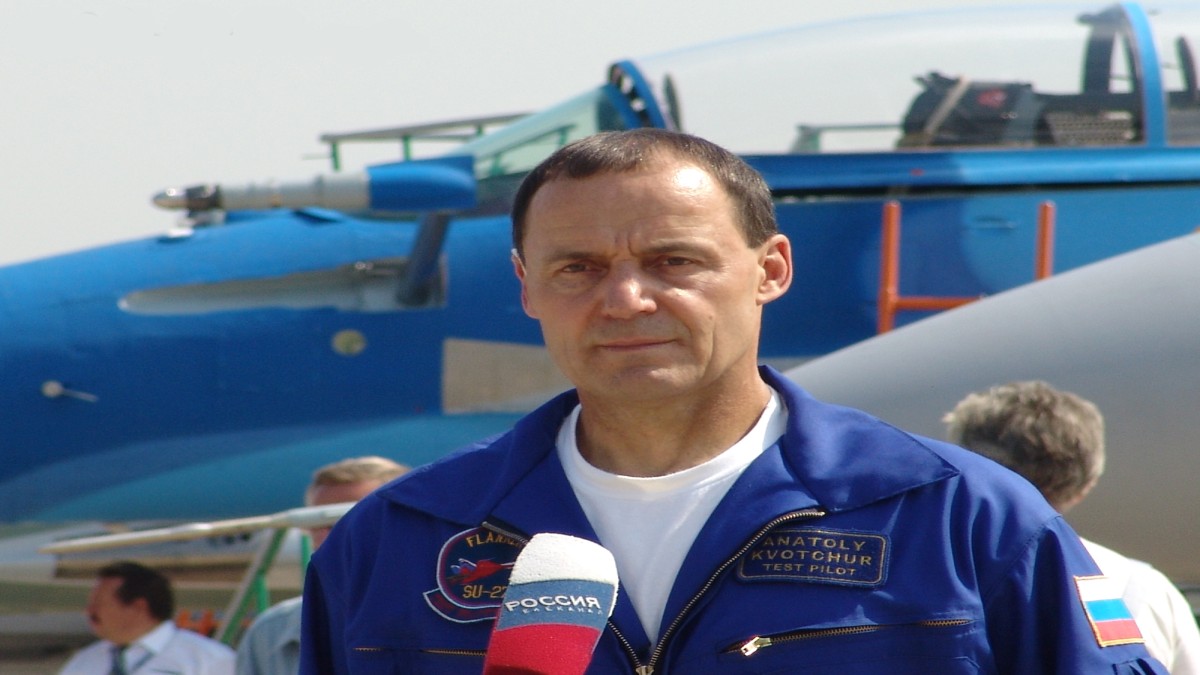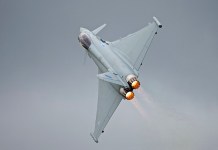Russian test pilot Anatoly Kvochur, a pioneering figure in the world of aviation renowned for his daring feats and groundbreaking achievements, passed away at the age of 72.
The death of Kvochur was confirmed by Victor Bondarev, the first deputy chairman of the defense committee of the Federation Council and ex-commander-in-chief of the Russian Aerospace Forces, through his Telegram channel.
In a heartfelt tribute, Bondarev hailed Kvochur as a “Soviet and Russian pilot,” a “Hero of the Russian Federation,” and an “Honored Test Pilot” who had left an indelible mark on the history of aviation.
Kvochur’s illustrious career spanned decades, during which he demonstrated unparalleled skill and courage in mastering and testing a staggering array of aircraft.
According to Bondarev, Kvochur’s achievements were nothing short of extraordinary. He noted that the esteemed test pilot had mastered and tested more than 90 types and modifications of aircraft.

In 2005, Kvochur made headlines by setting an impressive 11 world records while flying the Su-27, further solidifying his status as an aviation trailblazer. Among Kvochur’s most notable accomplishments was his demonstration of the ultimate strength of the MiG-29 fighter in 1982.
It marked the first instance of pushing the aircraft’s overload capacity to the maximum limit of 9 units, a feat that underscored his role in advancing the capabilities of Soviet-era aircraft.
He also made history with daring maneuvers such as night take-offs and landings from the deck of the aircraft carrier “Admiral of the Fleet of the Soviet Union Kuznetsov” in 1990 and a remarkable flight from Moscow to Australia and back in a Su-27 in 1995.
In addition to his remarkable exploits, Kvochur was known for pushing the boundaries of long-range flight. In 1999, he embarked on two ultra-long-range flights in a Su-27 through the North Pole, covering approximately 15 thousand kilometers each with mid-air refueling.
These groundbreaking flights served as platforms for the study of new scientific and technical developments, including satellite radio navigation systems and onboard computer equipment.
In 1989, Kvochur participated in a mission that marked a historic occasion: the first landing of MiG-29 fighters and the colossal Soviet An-225 transport on North American soil.
This event occurred as part of the Soviet delegation’s journey to the Abbotsford International Air Show in Vancouver, British Columbia. Following a brief refueling stop in Alaska, they were escorted to the Canadian border by US Air Force F-15 Eagles and greeted by Canadian CF-18 Hornet jet fighters.
During this time, the MiG-29 and An-225 garnered considerable media attention. The Soviets showcased these newly developed aircraft worldwide in hopes of attracting foreign buyers.
At that time, USAF Capt. Richard Armstrong, one of the F-15 Eagle pilots involved in escorting the MiGs through US airspace, expressed excitement at being the first American pilot to come into proximity with the new Soviet fighter.
Kvochur’s involvement in these high-profile events elevated him to a celebrity-like status globally. This was evident when, following the tragic downing of Malaysia Airlines Flight MH17 over Ukraine in 2014 by a Russian missile system, Kvochur was seen on Russian television refuting reports that the incident was caused by rebels backed by Moscow.
Kvochur Ejected Seconds Before The Crash Of His MiG-29
Anatoly Kvochur truly became the center of global attention in 1989 during a harrowing incident at the Paris Air Show. His daring and miraculous escape from a doomed MiG-29 fighter aircraft captured the world’s imagination and showcased the advanced technology employed by the Soviet Union.
The Paris Air Show was abuzz with anticipation as Kvochur took to the skies in the newly unveiled MiG-29, a fighter aircraft that remained shrouded in mystery for many in the West.

However, towards the conclusion of the display, tragedy struck as a bird was sucked into one of the MiG-29’s engines, causing the aircraft to veer dangerously toward the ground. With the aircraft hurtling towards the earth, Kvochur remained remarkably composed, taking decisive action to mitigate the potential catastrophe.
Kvochur opted to stay with the aircraft as long as possible and steered it away from the densely packed crowd below. His quick thinking and calm demeanor undoubtedly saved countless lives as he waited until the last possible moment before initiating his escape.
Less than two to three seconds before impact, Kvochur initiated the ejection sequence, launching himself from the doomed aircraft with impeccable timing. Despite the MiG-29’s cockpit pointing perilously towards the ground, Kvochur’s ejection seat propelled him safely away from the impending disaster.
With the crash occurring in full view of TV cameras, the world watched in awe as Kvochur emerged from the wreckage relatively unscathed, suffering only minor injuries from his oxygen mask.
Central to Kvochur’s survival was the innovative Zvezda K-36 ejector seat, equipped with a revolutionary auto gyro system and a series of rockets designed to propel the seat clear of danger regardless of its orientation.
The seat’s ability to change thrust vectors mid-flight played a pivotal role in ensuring Kvochur’s safe escape, defying the odds and leaving onlookers stunned.
The incident sent shockwaves through the Western engineering community, which had been unaware of the Soviet Union’s advances in ejection seat technology. In the aftermath of Kvochur’s miraculous escape, efforts were swiftly underway to incorporate similar features into Western ejector seats.
- Contact the author at ashishmichel(at)gmail.com
- Follow EurAsian Times on Google News




